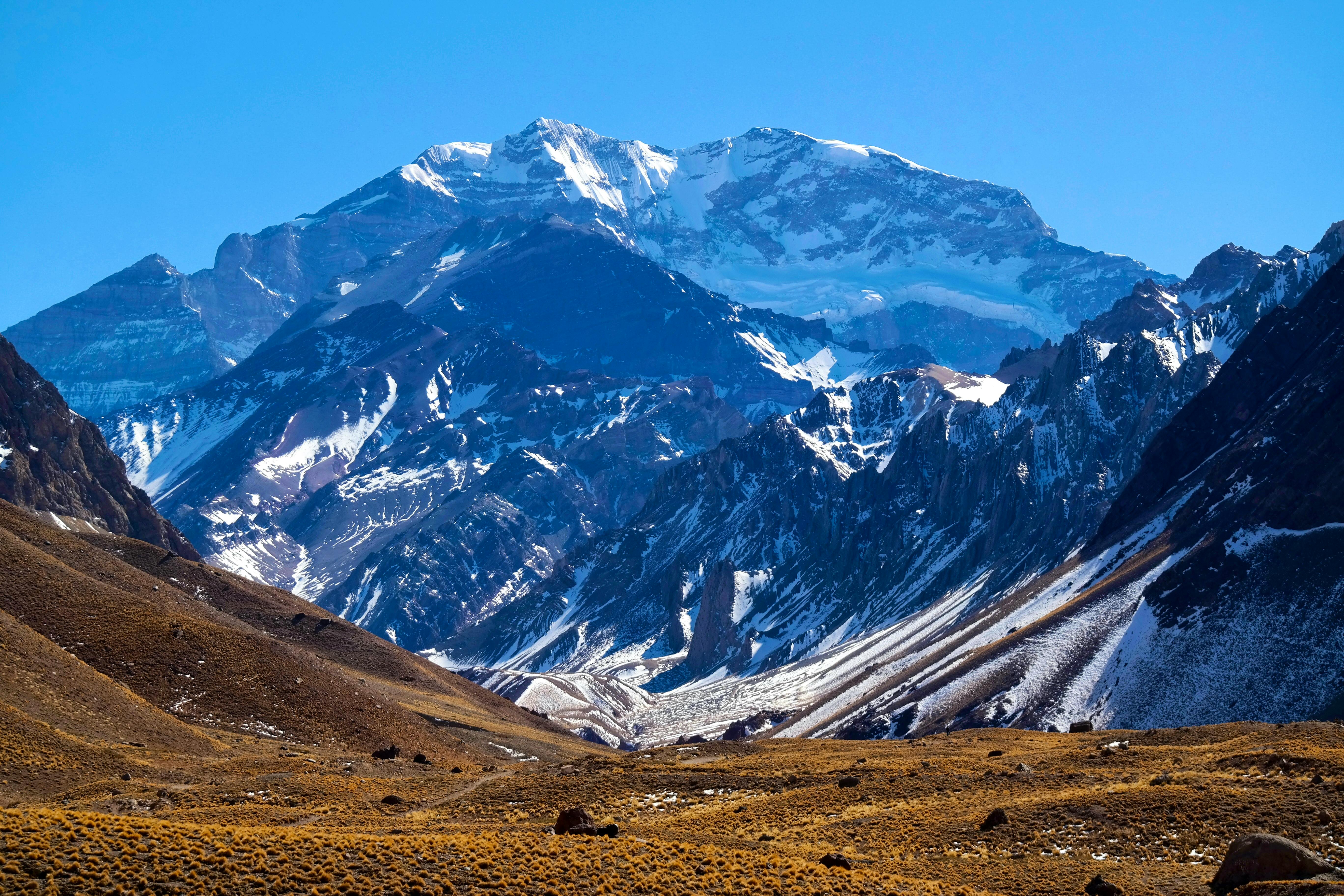If you like the ultimate challenge, no doubt you want to summit the 7 summits of the seven continents. Aconcagua proudly represents South America in
Argentina. It is the tallest mountain in the Andes mountain range, and, indeed the highest peak in the Southern and Western Hemispheres.
But like any other of the major mountains, your best chance of summiting successfully would be picking the best time to hike, when the weather and terrain allow an easier climb.
Here's more about the Aconcagua climbing season.
When is the Best Time of The Year to Climb Aconcagua?
The official dates for the mountain's hiking season run from November 15th to March 31st each year, covering the Southern Hemisphere's summer.
This summer period offers the best dry weather conditions, with relatively warmer temperatures and more stable weather patterns, making it safer and more accessible for climbers.
When picking the right month to climb Aconcagua, you can also consider hiking traffic, including:
High Season: These are the peak months of December and January. They are the best months to climb Acocagua due to the most favourable climbing conditions. This is when the majority of expeditions take place, including Skyhook's Aconcagua Summit Trip.
Low Season: The low season is the early and late summer: November 15th to November 30th, and February 21st to March 31st. You find fewer crowds but the periods come with less predictable weather conditions and potentially colder temperatures.
Here are more factors that can help you pick when to climb Aconcagua.

Latest Deals
Discover trips on sale on Skyhook. Book once-in-a-lifetime adventures at discounted prices.
Understanding the Aconcagua Climate
Aconcagua's high mountain climate mostly ranges between dry summers and extremely cold winters. The seasonal conditions are largely influenced by the mountain's towering presence, which can create its own weather systems.
The summit reaches approximately 6,961 metres (22,838 feet) above sea level, an elevation that results in significantly colder temperatures and more extreme weather conditions compared to lower elevations.
The wind patterns and the orography of the Andes further influence the climate of Aconcagua, contributing to its variability and the presence of phenomena such as the Zonda wind.
The Zonda wind originates from the Pacific Ocean, where warm, humid winds are drawn towards the Andes by the low-pressure systems off the coast. However, as they ascend the slopes of Aconcagua, they undergo a dramatic transformation.
The mountain's height forces these winds upwards, cooling them rapidly, and in the process, they lose their moisture in the form of snow as they reach the higher elevations of Aconcagua. And, this same Zonda wind can lead to the development of electric storms on the mountain.
These storms are a result of the unique microclimate around Aconcagua - the combination of the mountain's elevation, atmospheric conditions, and accumulation of charged particles in the air. During the warmer months, the storms can occur on the northwest flank and the peak, making it a bit dangerous for hiking.
While you hike in the summer, you can anticipate scarce and brief storms. You also want to be prepared for sudden weather changes, including snowstorms and strong winds, which can occur at any time.
When planning your journey to summit Aconcagua, it's best to understand the unique weather patterns you'll face. Note that regardless of the season, the weather on the mountain is unpredictable, so you must be practically prepared for changes in conditions and mentally prepared to turn around if the guides deem it unsafe to summit.
Apart from the possibility of the storms mentioned above, during the summer, Aconcagua's weather is predominantly dry, with snow being the primary form of precipitation, as rain is exceedingly rare. Cold and windy conditions are common, and the weather can change dramatically in a short period.
The wind chill factor can significantly lower temperatures, making the already cold environment feel even colder. Above 5,000 metres, nighttime temperatures can drop to -30°C, and even on a clear summer day, the summit might only reach around -20°C.
Winter on Aconcagua occurs in June/July, and presents an even more formidable challenge, with permanently freezing temperatures and frequent bad weather. You should avoid this season due to the extreme cold and increased risk of storms and whiteouts.
Hiking Permit and the "Right Months"
When choosing your Aconcagua climb time, you might also want to consider the cost of your hiking permit. This is offered by the
Aconcagua Provincial Park and you have to visit the Department of Renewable Resources in Mendoza City to register yourself.
The cost of Aconcagua climbing permits varies depending on the season but ranges between $800 and $1,100.
During the high season (15 December to 31 January), you will likely pay around $950 for the permit, and in the low season (15 November to 30 November and 21 February to 31 March), the permit can be cheaper at around $727.
The best Aconcagua season to go hiking is the high-season period between 15 December to 31 January. The summer months are when the weather is driest and slightly warmer to climb Aconcagua. But, remember that the skies can change unexpectedly - be prepared for harsh conditions no matter when you choose to climb.
















